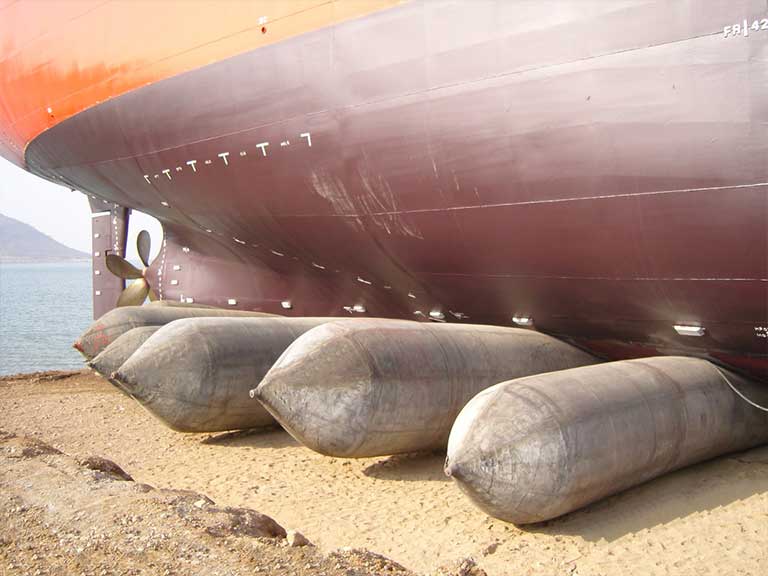Launching is an important step after the construction of a ship as it relates to the safety and service life of the ship. Choosing the right way of launching can ensure that the ship enters the water smoothly and safely. This can also control the speed, angle and direction to avoid damage.
There are several factors to consider when deciding how to launch. These include the type, size and weight of the vessel, as well as the conditions of the launch site. For example, larger boats require a more complex method, while smaller boats can use a simpler method. Henger summarizes four common ship launching methods:
- Gravity Launch
- Float-out launch
- Mechanical launch
- Airbag launch
Each method works best in different situations and has its advantages and disadvantages. Choosing the right one is especially important when launching at sea to make sure everything goes safely and correctly. Let’s look at the advantages and disadvantages of each method.
Table of Contents
Understanding Ship Launching and Its Importance
Launching a ship is a significant milestone, representing the culmination of months or years of construction. It’s the moment when a vessel first touches water, marking a major transition in its lifecycle.
Ship launching is essential in shipbuilding, requiring precise planning and execution. The shipyard must consider the vessel’s weight distribution and center of gravity. The process involves complex physics, including buoyancy, stability, and momentum. These factors must be carefully calculated to ensure a successful launch, preventing damage to the vessel.
Several factors are crucial for successful ship launching, including water depth, tidal conditions, and available space. Proper preparation and risk assessment are key to ensuring crew safety and preventing environmental damage.
| Factors | Description | Importance |
| Water Depth | Adequate depth to accommodate the vessel’s draft | High |
| Tidal Conditions | Understanding tidal patterns to plan the launch | Medium |
| Available Space | Sufficient space for the vessel to maneuver after launch | High |
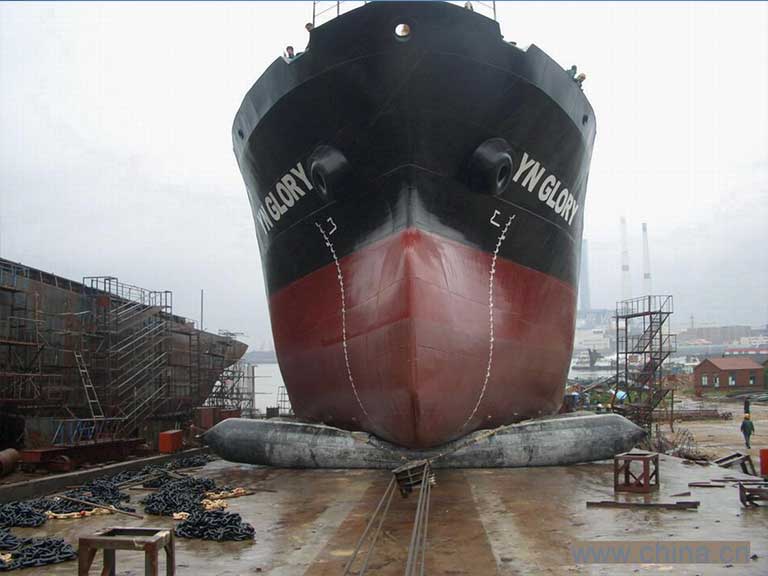
Methods of launching different types of vessels
Gravity Launch
Gravity launching is an older method that utilizes gravity to slide a vessel into the water along a ramp called a chute. This method is currently used primarily for small to medium sized vessels. The main methods include:
- Longitudinal oil-filled chute launching: Oil is added to the ramp to reduce friction and allow the boat to slide smoothly into the water.
- Longitudinal steel roller chute launching: Steel rollers are used to reduce friction, making it better for heavier ships. The rollers help support the weight of the boat for a smooth launch.
- Lateral oiled chute launching: This method is suitable for tight spaces. Friction is reduced by oiling the side chute, which allows the boat to slide sideways into the water.
The advantage of gravity launching is that it’s simple and low-cost, making it good for launches that don’t need fancy equipment. However, it is only suitable for certain types and sizes of boats and offers little control over the speed and direction of launching.
Float-out launching
Float-out launching is suitable for large ships and marine facilities. In this method, the ship is constructed in a dry dock. After the ship is completed, water is slowly added to the dry dock and then the ship floats into the water. This method is very safe and suitable for large ships. This is because it allows precise control over the entire process so that the ship remains balanced and stable while in the water.
The downside is that float-out launching is more expensive and needs special dry docks, which cost a lot to build and maintain.
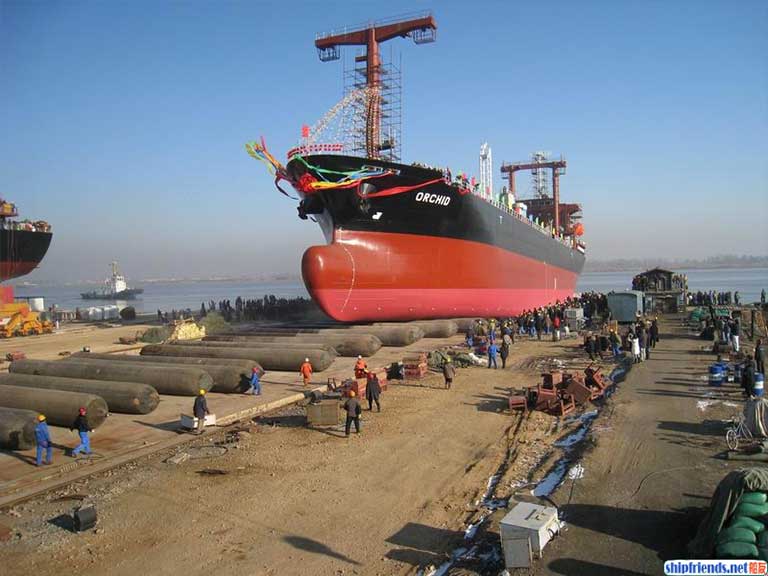
Mechanical Launch
Mechanical launching utilizes machines to control ship launching. It’s great for ships that need more precise launching, especially large ships or ships in tricky conditions. The following are some common methods:
Longitudinal Mechanized Slip Launching: A machine such as a winch or towing device is used to push the ship into the water along a ramp. This method helps to control the speed and direction of the launch.
Two-Point Longitudinal Mechanized Chute Launch: This method uses two mechanical points to balance the vessel during launching, and is particularly useful for longer vessels.
Wedge Mechanized Vehicle Launch: A special wedge-shaped vehicle pushes the boat into the water. This method works well on sloping surfaces and can cope with varying terrain.
High-Low Track Glide Mechanized Launch: The vessel is guided into the water by tracks that control the path the vessel takes into the water. This method is used when the vessel needs a specific direction of launching.
The advantage of mechanical launching is that it is very precise and can be adjusted for different vessel sizes and complex launching situations. But it uses complex equipment, is expensive to install and maintain, and the process can be more difficult to manage.
Airbag launching
Airbag launching is a flexible way to roll the ship into the water by placing an inflatable airbag under the hull. This method is usually used for ships with special shapes or limited space. The advantage of airbag launching is that the airbags can be reused and adjusted, making them suitable for different types of vessels and temporary launches. The main risk is to ensure that the airbags are placed and inflated correctly. If not done carefully, the vessel may lose balance or have uneven pressure when rolling into the water.
Henger offers different types of ship launching marine airbags to meet the needs of a wide range of vessels to ensure a smooth and safe launch.In addition to this, we offer various types of Marine airbags to meet the needs of surface operations such as salvage/lifting.
By using these different methods, a vessel can be safely launched in a controlled manner depending on the circumstances. Each method has its own advantages, and choosing the right one will help keep the vessel safe and ensure a successful launch.
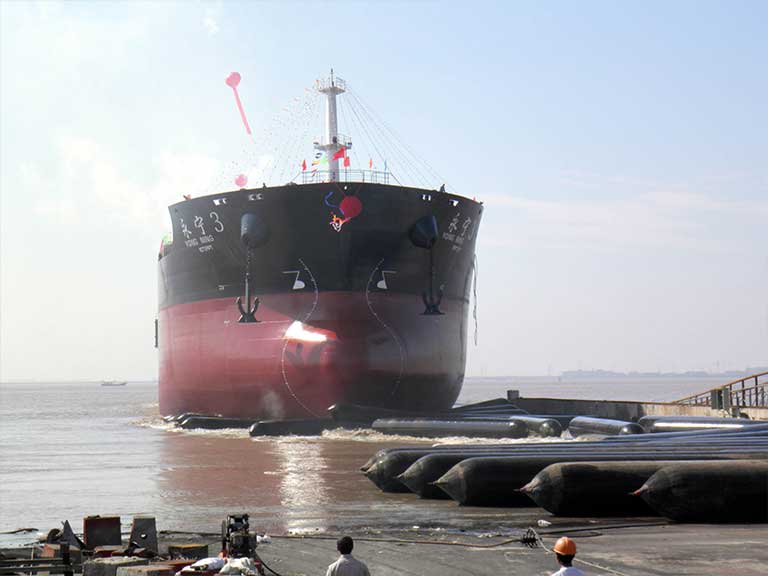
Comparing Ship Launching Methods: Safety, Efficiency, and Cost
The choice of launching method is critical. This is because it not only affects the safety of the vessel, but also its environmental footprint and operating costs. We compare various ship launching methods based on their safety records, operational efficiency, and cost considerations.
- Environmental Impact Considerations: Different launching techniques have varying environmental impacts. For instance, traditional methods using oiled slideways can potentially cause water pollution. Modern airbag systems have a minimal ecological footprint. Airbag launching is environmentally friendly as it requires no heavy infrastructure and minimizes shoreline disturbance.
- Vessel Size and Type: Vessel size and type significantly influence the choice of launching method. The floating-out method is considered safest for large vessels. Marine airbags are preferred for small to mid-sized ships due to their soft, controlled rollout. Technological improvements have enabled airbag launches for vessels up to 100,000 tons with proper engineering.
- Infrastructure Requirements: The infrastructure needed varies significantly across launching methods. Dry docks require extensive facilities, whereas airbag launching needs minimal setup. This difference affects not only the initial investment but also ongoing operational expenses and maintenance requirements.
| Factors | Description | Importance |
| Water Depth | Adequate depth to accommodate the vessel’s draft | High |
| Tidal Conditions | Understanding tidal patterns to plan the launch | Medium |
| Available Space | Sufficient space for the vessel to maneuver after launch | High |
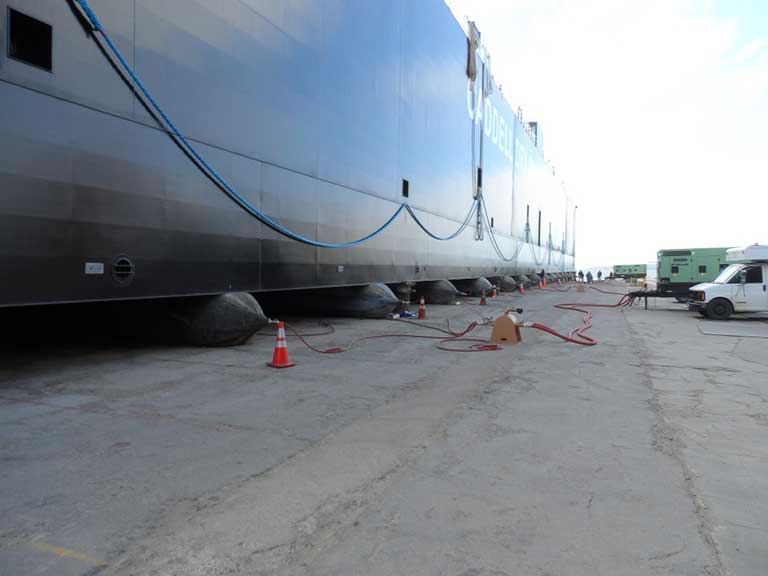
What happens if the calculations are wrong?
Precise calculations and careful handling are very important when launching. If the calculations are wrong or mistakes are made during the launch, several problems can happen that affect the ship’s safety. Here are some common problems and risks:
- Damage to the vessel: If uneven forces are applied during launching or ramps are not properly controlled, the vessel’s structure may be severely damaged. This damage may include dents, cracks, or even problems with the vessel moving through the water.
- Off Track: Vessels are required to follow a specific path when launching. If the calculations are off, the ship might not follow the correct path, causing it to enter the water at a bad angle or even crash into the pier or other ships.
- Loss of Speed: If the launching speed is not controlled, the vessel may enter the water at too fast a speed. This can result in damage to the boat or damage to the launching equipment. Fast launching may also result in a loss of control of the boat once in the water, increasing the chances of an accident.
To avoid these problems, the entire launching process must be carefully calculated and controlled. The correct launching method, site conditions and the size and weight of the boat must all be taken into account. Henger has a wealth of experience in this area and can provide you with expert advice to help ensure a smooth and safe launch.
Conclusion
The maritime industry is advancing rapidly, driven by innovations in ship launching technologies. These advancements enhance safety, reduce costs, and promote sustainability. Various ship launching methods have evolved, from traditional gravitational techniques to modern airbag systems, each offering unique benefits.
As a professional marine equipment supplier, Henger Shipping Supplies can provide you with high-quality ship launching airbags. In addition, we have a professional team that can solve all kinds of problems for you. If you have any questions, please contact us promptly.
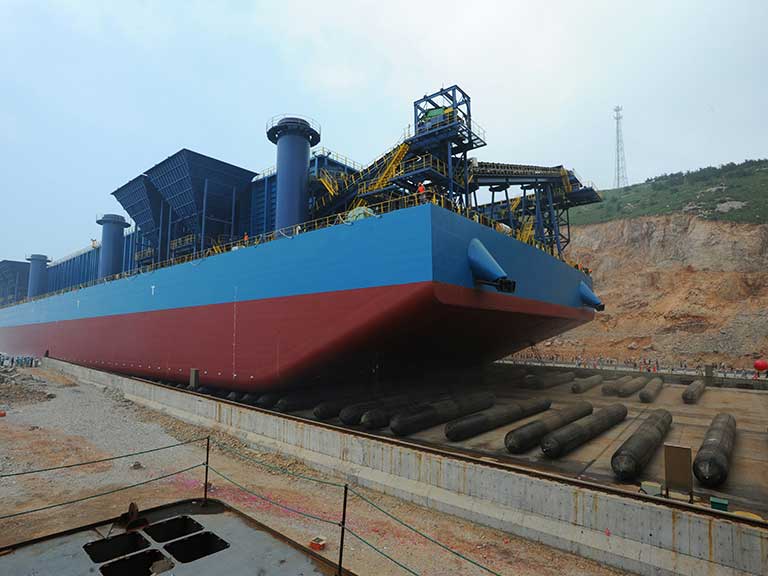
FAQ
What are the primary considerations for choosing a ship launching method?
When selecting a ship launching method, we consider factors such as vessel size and type, available infrastructure, environmental impact, and cost efficiency. This ensures a safe and successful launch.
How does airbag launching technology work?
Airbag launching technology involves using rubber airbags to support and move a vessel into the water. The airbags are inflated to lift the ship, and then gradually deflated as the vessel is transferred into the water. This provides a controlled and gentle launch.
What are the benefits of using mechanical type launching systems?
Mechanical type launching systems offer high precision and control during the launch process. They are particularly suitable for large or complex vessels. This method provides a reliable and efficient way to transfer the ship into the water.
How do gravitational launching techniques work?
Gravitational launching techniques rely on the weight of the vessel to slide down inclined planes or slides into the water. This method is often used in traditional shipbuilding and can be effective for certain types of vessels.
How do ship launching methods impact the environment?
Different ship launching methods have varying environmental impacts. For example, airbag launching technology is considered environmentally friendly as it reduces the risk of damage to the vessel and surrounding structures. We evaluate the environmental implications of each method to minimize harm.
What safety measures are taken during the ship launching process?
Safety is a top priority during ship launching. We implement various safety measures, including thorough planning, precise calculations, and the use of specialized equipment. This ensures a safe and controlled launch.

